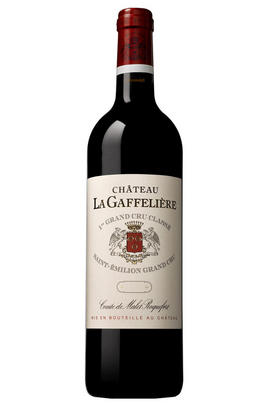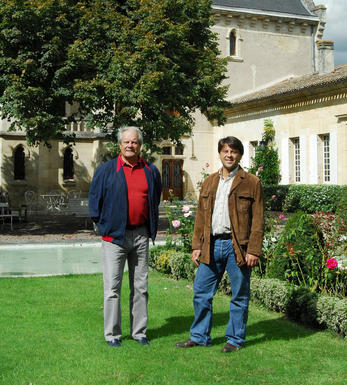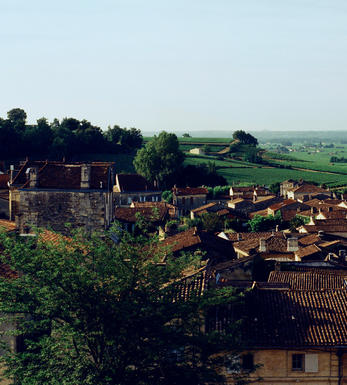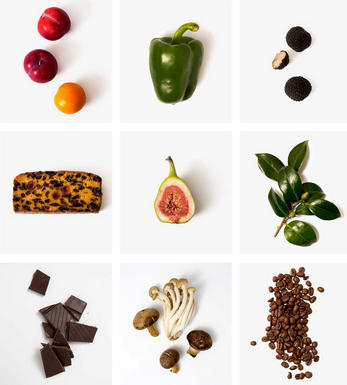
2020 Château La Gaffelière, St Emilion, Bordeaux

Critics reviews
The 2020 La Gaffelière has an intriguing, complex nose, a mélange of red and black fruit, cigar box, undergrowth and mint, quite mercurial in the glass as it opens with aeration. The palate is medium-bodied with lithe tannins, a beautiful seam of acidity and perhaps the most satin-like texture I have encountered on a young La Gaffelière. It sashays to a harmonious and precise finish and lingers with wonderful mineralité. This is a magnificent prospect.
Drink 2028 - 2060
Neil Martin, Vinous.com (April 2021)
The 2020 La Gaffelière is superb. Rich, dense and explosive. Black cherry, gravel, licorice, grilled herbs and menthol race out of the glass. Deep, pliant and explosive, the 2020 is magnificent. At this stage, the 2020 is an infant, but that won't be a problem in a few years. This vivid, statuesque Saint-Émilion is nothing short of thrilling.
Drink 2030 - 2060
Antonio Galloni, Vinous.com (February 2023)
42hl/ha yield.
Limestone dominance from the first moment, with saffron and oyster shell along with juicy and well-controlled blueberry and raspberry fruit, and white pepper spice. Cabernet Franc dominant in the aromatics of savoury tomato leaf, peony and heather, this is sleek, silky and excelllent quality. First vintage without the Grand Cru Classé on the label, as it withdrew from the ranking, and a clear loss to the classification.
Drink 2027 - 2042
Jane Anson, JaneAnson.com (January 2022)
Intense nose with good freshness. Quite distinctive! Lots of balsam savour on the end of the palate and sufficient acidity and tannin. Very, very different from the sweet, oaky stereotype. Polished tannins. One to watch… But only if your taste is 21st century rather than 20th century.
Drink 2027 - 2042
Jancis Robinson MW, JancisRobinson.com (December 2022)
Deep purple-black colored, the 2020 La Gaffeliere gallops out of the glass with exuberant scents of crushed black plums, boysenberries and fresh blackberries, plus hints of eucalyptus, dark chocolate, crushed rocks and iron ore, with a waft of lavender. The medium to full-bodied palate shimmers with compelling energy, delivering layers of black and red berries with fantastic tension and finely grained tannins, finishing very long and wonderfully minerally.
Drink 2026 - 2050
Lisa Perrotti-Brown MW, Wine Advocate (May 2021)
Blackberry and black-olive aromas and flavors. Full-bodied with layers of fine tannins that fill the mouth. Expansive finish. The tannins are very fine, but abundant. Really impressive.
James Suckling, JamesSuckling.com (April 2021)
Perfumed, delicate, generous and evocative all in equal measure. The fruit quality is excellent, so vibrant and lifted, shining out of the glass. Really bright with energy and dynamism. Lovely lifted expression full of rose petals, herbal-tinged raspberries, blackcurrants and plums. Chalky, creamy and salty, with a cooling freshness. Lots to like with classic elements as well as touches of the hot vintage. It’s not showing it’s best right now but this is delicious.
Drink 2025 - 2044
Georgina Handle, Decanter.com (January 2023)
The 2020 Château La Gaffelière checks in as a 60/40 split of Merlot and Cabernet Franc that saw 50% new barrels. This medium to full-bodied, pure, elegant, seamless Saint-Emilion has lots of cassis and darker raspberry-like fruits, good mid-palate depth, ripe tannins, and solid complexity in its notes of graphite, sandalwood, and Asian spices. It doesn't bring the depth and richness of the top wines in the vintage, but it certainly shines for its complexity and balance.
Drink 2025 - 2040
Jeb Dunnuck, JebDunnuck.com (March 2023)
About this WINE

Chateau La Gaffeliere
Château La Gaffelière is owned by Léo de Malet Roquefort, and the 22 hectare property produces on average 10,000 cases per year. Located in the centre of the St. Emilion appellation, due south of St. Emilion town, the property shares a similar climate to that enjoyed by both St.Emilion and Pomerol: more continental than the maritime Médoc, with generally more spring rainfall, though less in summer and winter.
La Gaffeliere's vineyards (Cabernet Sauvignon 5%, Merlot 65%, Cabernet Franc 30%) lie on a sloped sandy/clay-limestone topsoil and limestone subsoil (a mix of Côtes and Pieds de Côtes). Fermentation takes place in stainless steel followed by extended wood maturation, with 33% of the barells being renewed annually.
La Gaffeliere is classified as a 1er grand cru classé(B).

St Émilion
St Émilion is one of Bordeaux's largest producing appellations, producing more wine than Listrac, Moulis, St Estèphe, Pauillac, St Julien and Margaux put together. St Emilion has been producing wine for longer than the Médoc but its lack of accessibility to Bordeaux's port and market-restricted exports to mainland Europe meant the region initially did not enjoy the commercial success that funded the great châteaux of the Left Bank.
St Émilion itself is the prettiest of Bordeaux's wine towns, perched on top of the steep limestone slopes upon which many of the region's finest vineyards are situated. However, more than half of the appellation's vineyards lie on the plain between the town and the Dordogne River on sandy, alluvial soils with a sprinkling of gravel.
Further diversity is added by a small, complex gravel bed to the north-east of the region on the border with Pomerol. Atypically for St Émilion, this allows Cabernet Franc and, to a lesser extent, Cabernet Sauvignon to prosper and defines the personality of the great wines such as Ch. Cheval Blanc.
In the early 1990s there was an explosion of experimentation and evolution, leading to the rise of the garagistes, producers of deeply-concentrated wines made in very small quantities and offered at high prices. The appellation is also surrounded by four satellite appellations, Montagne, Lussac, Puisseguin and St. Georges, which enjoy a family similarity but not the complexity of the best wines.
St Émilion was first officially classified in 1954, and is the most meritocratic classification system in Bordeaux, as it is regularly amended. The most recent revision of the classification was in 2012

Merlot
The most widely planted grape in Bordeaux and a grape that has been on a relentless expansion drive throughout the world in the last decade. Merlot is adaptable to most soils and is relatively simple to cultivate. It is a vigorous naturally high yielding grape that requires savage pruning - over-cropped Merlot-based wines are dilute and bland. It is also vital to pick at optimum ripeness as Merlot can quickly lose its varietal characteristics if harvested overripe.
In St.Emilion and Pomerol it withstands the moist clay rich soils far better than Cabernet grapes, and at it best produces opulently rich, plummy clarets with succulent fruitcake-like nuances. Le Pin, Pétrus and Clinet are examples of hedonistically rich Merlot wines at their very best. It also plays a key supporting role in filling out the middle palate of the Cabernet-dominated wines of the Médoc and Graves.
Merlot is now grown in virtually all wine growing countries and is particularly successful in California, Chile and Northern Italy.


Buying options
Add to wishlist
Description
60% Merlot, and 40% Cabernet Franc.
There is an ease and self-confidence with which La Gaffelière presents itself nowadays. Its mineral notes and composed fruitiness are in tune with the strategies of HVE3 certification in the vineyard and zero use of SO2 during fermentation. The bouquet offers spice and fruitcake, with a purity and energy running through to the palate. This is bolstered by a broader but still transparent texture, now with notes of tobacco and snuff. This wine marries the ethereal and the substantive.
Drink 2026 - 2042
Berry Bros. & Rudd
wine at a glance
Delivery and quality guarantee